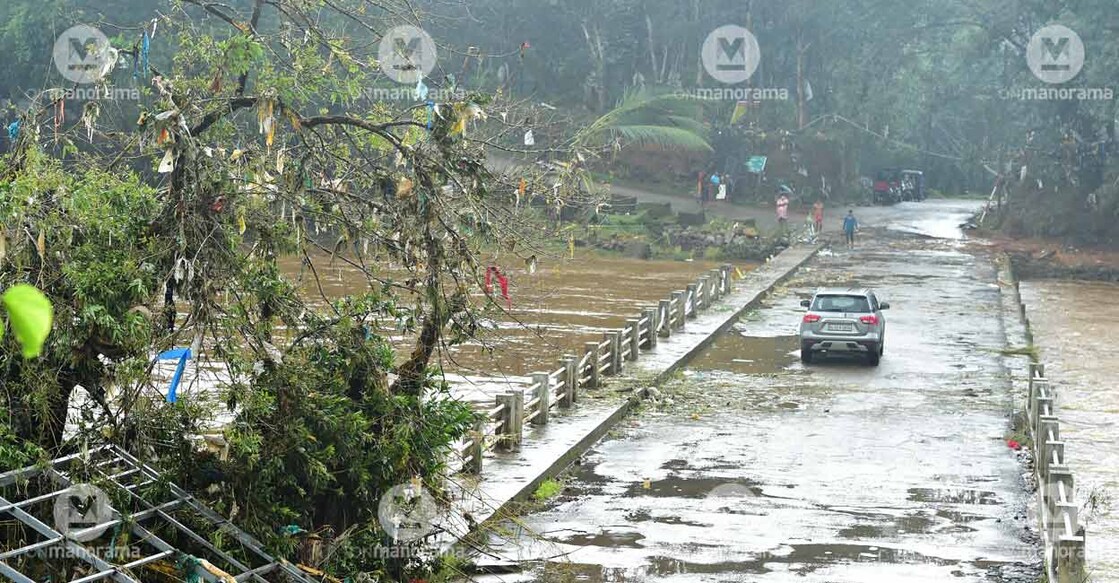When Met alerts for Kerala went horribly wrong towards the weekend

Mail This Article
(Editor’s Note: This is the first part of of a four-part series by Malayala Manorama. Read the second part here.)
Rain-related flash floods and landslides wreaked havoc for the consecutive fourth year in Kerala, taking the cumulative total number of deaths since 2018 well past the 500 mark.
Extremely heavy rains and cloud bursts have become common even as the state has been witnessing a marked increase in low-pressure areas over the Arabian Sea and Bay of Bengal turning into cyclonic storms. Low-pressure systems changing its course to cause unprecedented damage, too, have increased over the years.
The recurring extreme weather conditions have triggered several questions: What is causing such conditions? Is the exploitation of nature leading Kerala towards a catastrophe? What all lessons have Kerala learnt from the floods? What precautions should the state take to overcome possible natural calamities in future?
The incessant heavy downpour that battered Kerala on October 15 and 16 shocked not only the state, but the India Meteorological Department (IMD) as well. The Central weather-monitoring agency, at 1 pm on October 14, issued an Orange alert for the next day for Malappuram and Palakkad, and Yellow for all districts except Wayanad and Kozhikode. It sounded an orange alert in Kannur, Wayanad, Kozhikode and Malappuram anticipating heavy rains on October 16, and issued the yellow code for all districts, except Thiruvananthapuram.
The IMD also predicted that heavy rains would spare Kerala on October 17 and 18.
The forecast issued at 1pm on October 15 predicted heavy rains and placed Kozhikode and Malappuram under Orange alert, and issued Yellow for Kannur, Wayanad, Thrissur, Palakkad, Ernakulam, and Idukki.

The rest of the districts, IMD said, would receive moderate rains.
The Met department, in its 1pm bulletin on October 16, issued a red alert for Thrissur, Ernakulam, Idukki, Kottayam, and Pathanamthitta, yellow for Kasaragod and Kannur, and orange for the remaining seven districts.
The predictions, however, went wrong as extremely heavy rains battered Kerala during the 24 hours from October 15 noon. Kottayam district, where heavy rains had not been predicted, and Idukki, which was on yellow alert, received extremely heavy rains causing landslides and flash floods. People were not issued any warning to move to safer places, and by the time the alert was issued, it was too late, and the floods affected thousands of people.

Kerala is facing extreme floods in at least three districts, and according to the state Revenue Department, at least 25 people have lost their lives in the heavy rains and landslips in the past two days. There has also been extensive damage to infrastructure.
The state government sought assistance of the armed forces after the unprecedented rains triggered numerous landslides in the hilly terrains of many rural villages and small towns.
The National Disaster Response Force is carrying out an intensive rescue operation.
(As per the Met standards, a Red alert denotes heavy to extremely heavy rains of over 20 cm in 24 hours, while Orange alert signifies very heavy rains of 6 cm to 20 cm of rains. A Yellow alert, on the other hand, denotes heavy rainfall between 6 to 11 cm.)

What caused the havoc?
The 80.8 millimetre rain Kerala received on October 16 could not be considered as dangerously high, and it was 2 mm more than the 78.7 mm of rains received on October 12. The state had not reported any major incidents on October 12. Extremely heavy rains concentrating on smaller areas contributed to the loss of life and widespread damage and destruction of properties on October 16.
The Met department does not have a rain gauge at Mundakayam. The irrigation department, which has one, reported 347 mm of rainfall. Downpour above 204.5 mm has been classified as extremely heavy rainfall.
The unexpected, extremely heavy rainfall in short bursts at specific areas led to the landslides and flash floods at Kuttickal and Kokkayar, worst-hit areas.
The IMD has not yet announced the retreat of the southwest monsoon from Kerala, nor the setting in of northeast monsoon over the State, though rains received from October 1 are normally accounted as northeast (retreating) monsoon.
The normal rainfall Kerala received between October 1 and 17 is 173.4 mm, which showed a 138 per cent excess to 412.3 mm this year. Kozhikode and Pathanamthitta received more than 200 per cent of excessive rainfall.

